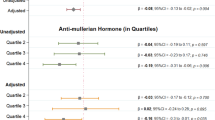Abstract
Background: The increasing use of cellulartelephones is known to have harmful effects onhuman health. The aim of this prospective studywas to determine whether cellular telephone useaffected serum PSA levels in men. Methods: Participants included 20 menwith ages ranging from 22 to 65 years who hadnever previously used cellular telephones.Blood samples were taken prior to and 30 daysafter the beginning of cellular telephone use.Serum was separated from the blood samples andstored in a deep freezer until the end of thestudy, at which time serum free and total PSAlevels were determined by tandemradioimmunoassay. The results werestatistically analyzed by the Wilcoxon PairedSigned Rank Test. Results: Average free and total PSAvalues were 2.070 ng/ml and 0.500 ng/ml beforethe study, and 2.0 ng/ml and 0.505 ng/ml at theend of the study, respectively. No significantdifference was determined between the initialand final values (p > 0.05). Conclusions: The results indicatethat cellular telephone use does notsignificantly affect PSA values in the shortterm. Nevertheless, we think that there is aneed for longer-term studies on this subject.
Similar content being viewed by others
References
Hubermark SH. Health concerns. Mobile Europe 1994 (July/August): 36-38.
Santini R, Seigne M, Bonhomme-Faivre L. Danger of cellular telephones and their relay stations. Pathol Biol (Paris) 2000; 48(6): 525-528.
Pienta KJ. Etiology, Epidemiology, and prevention of carcinoma of the prostate. In: Walsh PC, Retik AB, Vaughan ED, Wein AJ, eds. Campbell's Urology. Philadelphia: W.B. Saunders, 1998: 2489-2496.
Statistica for Windows, release 4.5 copyright, Statsoft, Inc. 1993.
Altamura G, Toscano S, Gentilucci G et al. Influence of digital and analogue cellular telephones on implanted pacemakers. Eur Heart J 1997; 18: 1632-1641.
Blettner M, Schlehofer B. Is their an increased risk of leukemia, brain tumors or breast cancer after exposure to high-frequency radiation?: review of methods and results of epidemiologic studies. Med Klin 1999; 94: 150-158.
Eulitz C, Ullsperger P, Freude G, Elbert T. Mobile phones modulate response patterns of human brain activity. Neuroreport 1998; 9: 3229-3232.
Wertheimmer N, Leeper E. Electrical wring configurations and childhood cancer. Am J Epidemiol 1979; 109: 273-284.
Johnson CC, Spitz MR. Childhood neurvous system tumours: an assessment of risk associated with paternal occupation, repair of manufacture of electrical and electronic equipment. Int J Epidemiol 1989; 18: 756-762.
Thomas TL. Brain tumour mortality risk among men with electrical and electronic jobs: a case controlled study. J National Cancer Inst 1987; 79: 223-228.
Davis RL, Milham S. Altered immune status in aluminum redection plant workers. Am J Indust Med 1990; 18: 79-85.
Imaida K, Taki M, Watanabe S et al. The 1.5 GHz elctromagnetic near-fieled used for cellular phones does not promote rat liver carcinogenesis in a medium-term liver bioassay. Jpn J Cancer Res 1998; 89(10): 995-1002.
Galeev AL. Effects of the microwave radiation from the cellular phones on humans and animals. Ross Fiziol Zh Im Im Sechenova 1998; 84 (11): 1293-1302.
Dasdağ S, Ketani MA, Akdag Z et al. Whole-body microwave exposure emitted by cellular phones and testicular function of rats. Urol Res 1999; 27(3): 219-223.
Dasdağ S, Akdağ MZ, Aksen F et al. The effects of wholebody microwave exposure emitted from cellular phones on testicular function, P53 tumor supressor gene, lipid prof+le and lipid peroxidation of rats' testes. 5th International Congress of the European BioElectromagnetics Association (EBEA), 6-8 Sep 2001, Helsinki, Finland. Proceeding Book: 231-233.
deSeze R, Ayoub J, Peray P, Miro L, Touitou Y. Evaluation in humans of the effects of radiocellular telephones on the circadian patterns of melatonin secretion, a chronobiological rhythm marker. J Pineal Res 1999; 27(4): 237-242.
Aslan D, Yurdakök K. Cep telefonu ve çocuk sağlığı. Çocuk sağlığı ve Hastalıkları Dergisi 2000; 43: 123-127.
Santini R. Cellular telephones and their relay stations: a health risk? Presse Med 1999; 28(34): 1884-1886.
Da¸sdağ S, Akdağ MZ, Ayyıldız O et al. Do cellular phones alter blood parameters and birth weight of rats? Electro and Magnetobiology 2000; 19(1): 107-112.
Gilligan P, Somerville S, Ennis JT. GSMcell phones can interfere with ionizing radiation dose monitoring equipment. Br Radiol 2000; 73(873): 994-998.
Paredi P, Kharitonov SA, Hanazawa T, Barnes PJ. Local vasodilator response to mobile phones. Laryngoscope 2001; 111(1): 159-162.
Author information
Authors and Affiliations
Corresponding author
Rights and permissions
About this article
Cite this article
Şimşek, V., Şahin, H., Akay, A.F. et al. The effects of cellular telephone use on serum PSA levels in men. Int Urol Nephrol 35, 193–196 (2003). https://doi.org/10.1023/B:UROL.0000020295.92477.c4
Issue Date:
DOI: https://doi.org/10.1023/B:UROL.0000020295.92477.c4




